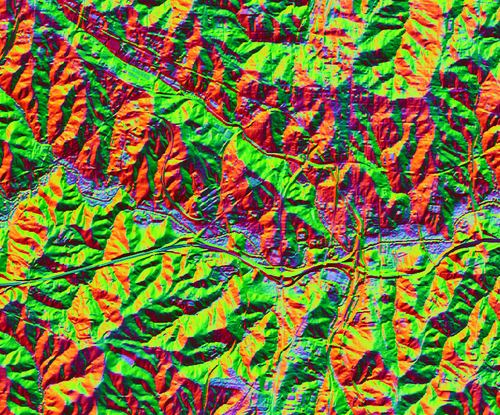
Figure: The RGB composition of first 3 PCA components (output from r.shaded.pca with default values)
# basic example with changed vertical exaggeration r.shaded.pca input=elevation output=elevation_pca_shaded zscale=100 # example of more complicated settings # including output shades and principal component maps r.shaded.pca input=elevation output=elevation_pca_shaded \ zscale=100 altitude=15 nazimuths=16 nprocs=4 \ shades_basename=elevation_pca_shaded_shades pca_shades_basename=elevation_pca_shaded_pcs

Figure: The RGB composition of first 3 PCA components (output from r.shaded.pca with default values)
Last changed: $Date$